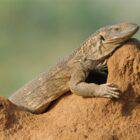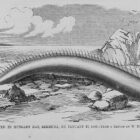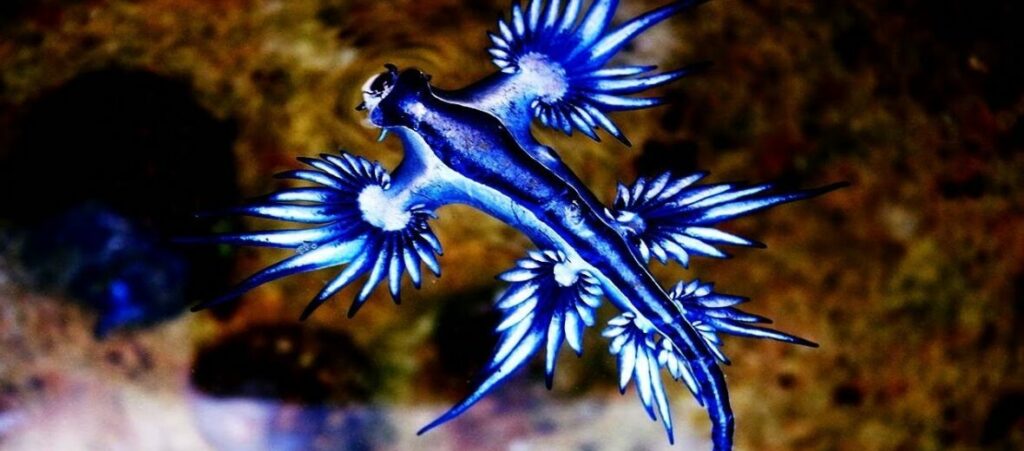Is the Gila monster lizard venomous?
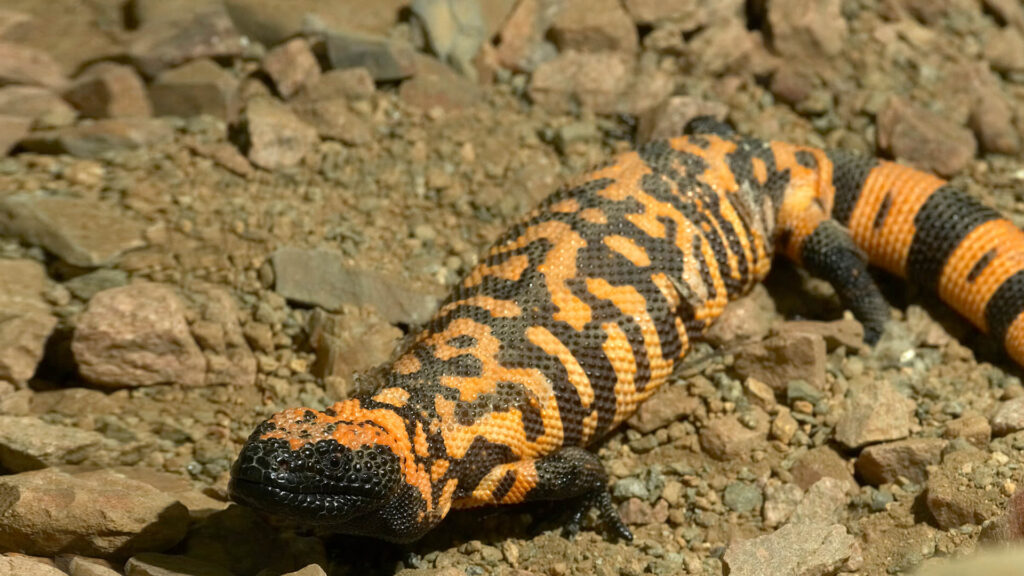
The Gila monster, scientifically known as Heloderma suspectum, is a species of venomous lizard native to the southwestern United States and Mexico. It is the largest lizard native to the United States and one of only two venomous lizards in North America, the other being the Mexican beaded lizard (Heloderma horridum).
Recent Fatality
On February 16, 2024, a tragic incident occurred in Colorado when a 34-year-old man named Christopher Ward was bitten by his pet Gila monster. This unfortunate event led to Ward being rushed to the hospital, where he was placed on life support. Despite the efforts of medical professionals, Ward passed away soon after.
The circumstances surrounding Ward’s death have raised questions about the venomous nature of Gila monsters. While these lizards are known for their venomous bite, instances of their bites proving fatal are extremely rare. The Jefferson County coroner’s office has yet to confirm whether Ward’s death was directly caused by the Gila monster’s venom or if there were other contributing factors.
Gila Monster Behavior and Habitat
The Gila monster is a primarily nocturnal creature, spending up to 90% of its life underground in burrows or rocky shelters. It is most active in the morning during the dry season, spring, and early summer, and may also be active on warm nights or after a thunderstorm later in the summer.
The lizard maintains a surface body temperature of about 30 °C (86 °F) but can decrease its body temperature by up to 2 °C (3.6 °F) by limited evaporation via the cloaca. Gila monsters are slow sprinters but have high endurance and maximal aerobic capacity compared to other lizards. They are preyed upon by coyotes, badgers, and raptors, and hatchlings are preyed on by snakes such as kingsnakes.
Gila Monster Diet and Feeding Behavior
The Gila monster’s diet consists of a variety of food items, including small mammals, birds, snakes, lizards, frogs, insects, other invertebrates, carrion, and the eggs of birds, lizards, snakes, and tortoises. They feed whenever they come across suitable prey, and young Gila monsters can swallow up to 50% of their body weight in a single meal, while adults may eat up to one third of their body weight in one meal.
The Gila monster uses its extremely acute sense of smell to locate prey, and prey may be crushed to death if large or eaten alive, usually head first. They are able to climb trees, cacti, and even fairly straight, rough-surfaced walls.
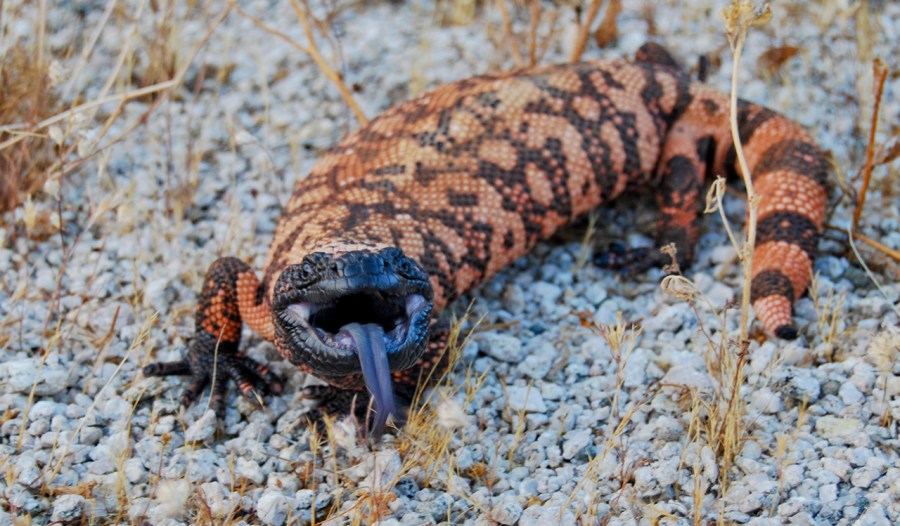
Myths and Legends about Gila Monster’s Venom
One of the most enduring myths was that the Gila monster had foul or toxic breath. This belief likely stemmed from the observation that the Gila monster’s tongue is often dark in coloration. In reality, the Gila monster’s tongue is not toxic, but rather adapted for collecting scent molecules to be transferred to the opening of the Jacobson’s organ, located around the middle of the upper mouth cavern.
Another myth was that the Gila monster’s bite was fatal. This belief likely arose from the Gila monster’s fearsome appearance and its venomous nature. However, the Gila monster’s venom is not typically fatal to healthy adult humans. While a bite can cause excruciating pain, edema, and weakness, it is not usually life-threatening.
Old West Accounts About Gila Monster
In another account from 1890, a ranch owner named Walter Vail captured a Gila monster southeast of Tucson, Arizona Territory. He thought he had killed it, but the lizard bit his middle finger and would not let go. A ranch hand pried open the lizard’s mouth with a pocket knife, cut open Vail’s finger to stimulate bleeding, and then tied saddle strings around his finger and wrist. Vail experienced swollen and bleeding glands in his throat for some time afterward but eventually recovered.
Dr. George Goodfellow of Tombstone was among the first to research the actual effects of Gila monster venom. In 1891, he purposely provoked one of his captive lizards into biting him on his finger. The bite made him ill, and he spent the next five days in bed, but he completely recovered. When Scientific American ran a report on the lizard’s ability to kill people, he wrote in reply and described his own studies and personal experience. He wrote that he knew several people who had been bitten by Gila monsters but had not died from the bite.
Is the Gila Monster Venomous?
Unlike snakes, whose venom is produced in glands behind the eyes, the Gila monster’s venom is produced in modified salivary glands at the end of its lower jaws. This venom is then propelled from the gland via a tubing to the base of the lower teeth and then chewed into the victim. The venom delivery system of the Gila monster is complex and fascinating, with tightly anchored teeth that change and replace during the lizard’s entire life in a “wavelike” sequence.
The Gila monster’s venom is composed of a complex mixture of more than a dozen peptides and other substances. These include hyaluronidase, serotonin, phospholipase A2, and several kallikrein-like glycoproteins. These substances work together to produce the intense pain, edema, and weakness associated with a Gila monster bite. The venom also causes a rapid drop in blood pressure, which can be dangerous for some individuals.
In addition to these effects, four potentially lethal toxins have been isolated from the Gila monster’s venom. These toxins cause hemorrhage in internal organs and exophthalmos (bulging of the eyes). One of the most well-known toxins is helothermine, which causes lethargy, partial paralysis of the limbs, and hypothermia in rats. These toxins are similar in action to the vasoactive intestinal peptide (VIP), which relaxes smooth muscle and regulates water and electrolyte secretion between the small and large intestines.
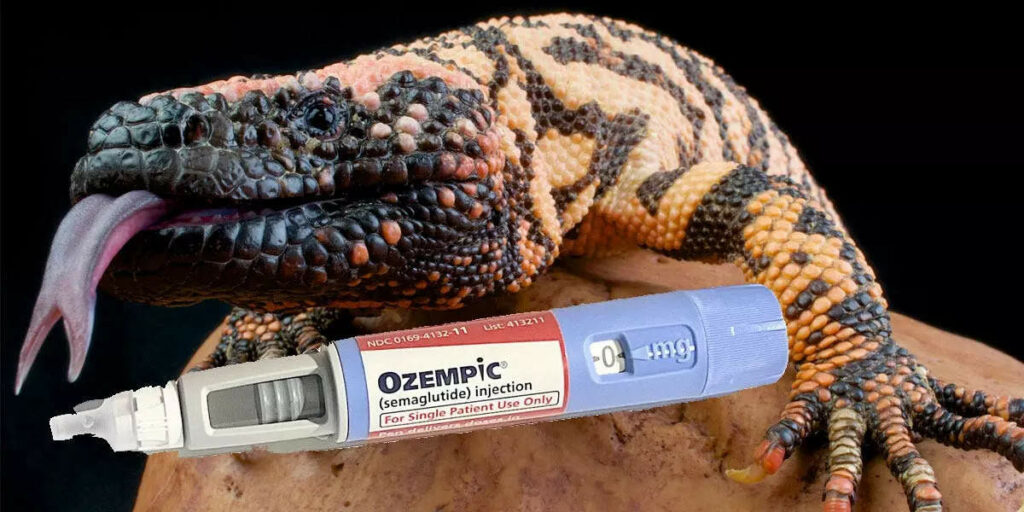
Gila Monster Venom in Medical Research
The venom of the Gila monster has been a subject of medical research for decades, with findings showing its potential to be a valuable resource in treating various health conditions. One of the most significant areas of study is its application in diabetes management.
Gila monster venom contains a peptide called exendin-4, which is structurally similar to a hormone called glucagon-like peptide-1 (GLP-1) found in humans. GLP-1 is released from the gut in response to food intake and stimulates insulin secretion, suppresses glucagon secretion, slows gastric emptying, and reduces appetite. These actions help regulate blood sugar levels and contribute to weight loss.
Exenatide, a synthetic version of exendin-4, was developed based on research into the Gila monster’s venom. It is a type of medication known as a GLP-1 receptor agonist, which means it mimics the effects of GLP-1 in the body. Exenatide was approved by the U.S. Food and Drug Administration (FDA) in 2005 for the treatment of type 2 diabetes. It is available as an injectable medication and is used in combination with other diabetes medications or insulin.
Clinical studies have shown that exenatide can improve blood sugar control, reduce HbA1c levels (a measure of long-term blood sugar control), and promote weight loss in people with type 2 diabetes. It is typically administered once or twice daily before meals and has been shown to be effective in reducing fasting and postprandial (after-meal) blood sugar levels. Exenatide has also been associated with a lower risk of hypoglycemia (low blood sugar) compared to some other diabetes medications.

